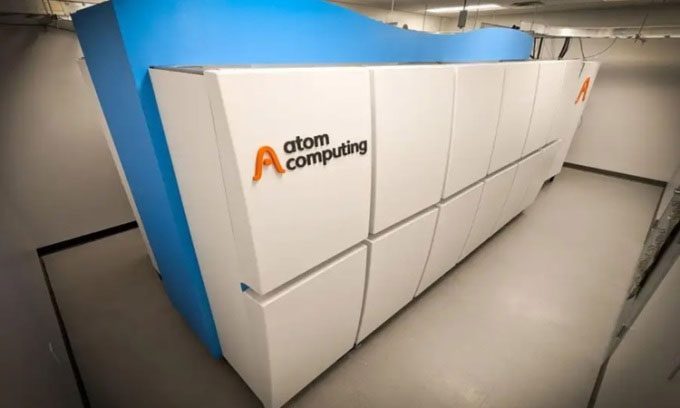Atom Computing Creates the First Quantum Computer with 1,180 Qubits, Enhancing Machine Accuracy.
The world’s first quantum computer boasts more than double the number of qubits compared to the previous world record holder, IBM’s Osprey (433 qubits). While having more qubits does not necessarily equate to better performance, a large number of qubits is crucial for future fault-tolerant quantum computers, as opposed to the current noisy research machines. The largest quantum computers, like those from IBM and Google, utilize superconducting circuits cooled to extremely low temperatures. However, the record-setting machine from the startup Atom Computing in California features 1,180 qubits, using neutral atoms held in place by lasers in a two-dimensional lattice, as reported by New Scientist on October 24.

The largest quantum computer made by Atom Computing. (Photo: Atom Computing).
One advantage of this design is the ease of scaling the system and adding more qubits to the network, according to Rob Hays, CEO of Atom Computing. Any useful future quantum computer that is fault-tolerant (a feature known as fault tolerance) will require at least tens of thousands of error-correcting qubits operating in parallel with programmable qubits.
“If we only scale up to tens of qubits, like most current superconducting and ion trap systems, it will take us a very long time to reach the era of fault-tolerant machines. With the neutral atom approach, we can reach that milestone much faster,” Hays explained. According to him, Atom Computing’s research team aims to increase the number of qubits in the machine by about 10 times every two years.
Unlike traditional computer bits that have values of 1 or 0, qubits are more diverse, exhibiting a range of characteristics depending on how they are created. Neutral atoms are better suited for quantum entanglement, a strange quantum effect where two qubits are linked and can influence each other even over vast distances. They also operate more stably. The qubits in Atom Computing’s machine prevent quantum states from collapsing, achieving fault tolerance for nearly a minute. In contrast, IBM’s Osprey computer has a qubit coherence time of only about 70 – 80 microseconds.
The extended coherence time comes from the ytterbium atoms that Hays and his colleagues use as qubits. Most neutral atom machines use the electrons of the atoms as quantum elements to perform calculations, but these are easily affected by strong lasers used to hold them in place. With ytterbium, researchers can utilize a quantum property of the atomic nucleus called spin (the intrinsic angular momentum of the particle), which is less sensitive to disturbances. According to researcher Ben Bloom at Atom Computing, the nucleus does not interact with the external environment as strongly as the electrons.
Due to the numerous characteristics of qubits, it is challenging to compare them across different machines. However, Bloom noted that Atom Computing’s machine has processing capabilities comparable to IBM’s computers. The research team hopes to deliver computers to customers next year for use in cloud computing.


















































